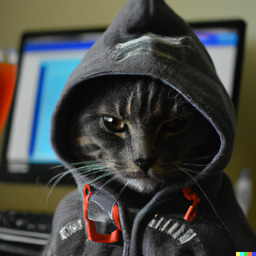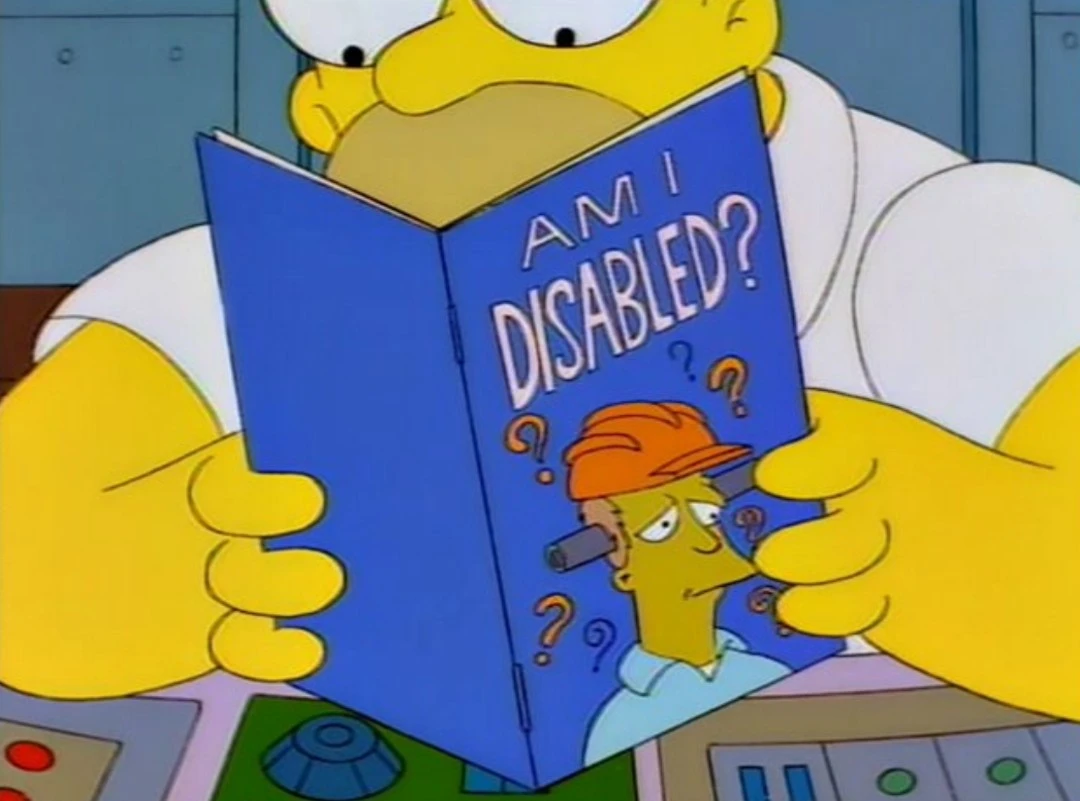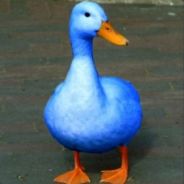So, I’m selfhosting immich, the issue is we tend to take a lot of pictures of the same scene/thing to later pick the best, and well, we can have 5~10 photos which are basically duplicates but not quite.
Some duplicate finding programs put those images at 95% or more similarity.
I’m wondering if there’s any way, probably at file system level, for the same images to be compressed together.
Maybe deduplication?
Have any of you guys handled a similar situation?
deleted by creator
The first thing I would do writing such a paper would be to test current compression algorithms by create a collage of the similar images and see how that compares to the size of the indiviual images.
Compressed length is already known to be a powerful metric for classification tasks, but requires polynomial time to do the classification. As much as I hate to admit it, you’re better off using a neural network because they work in linear time, or figuring out how to apply the kernel trick to the metric outlined in this paper.
a formal paper on using compression length as a measure of similarity: https://arxiv.org/pdf/cs/0111054
a blog post on this topic, applied to image classification:
I was not talking about classification. What I was talking about was a simple probe at how well a collage of similar images compares in compressed size to the images individually. The hypothesis is that a compression codec would compress images with similar colordistribution in a spritesheet better than if it encode each image individually. I don’t know, the savings might be neglible, but I’d assume that there was something to gain at least for some compression codecs. I doubt doing deduplication post compression has much to gain.
I think you’re overthinking the classification task. These images are very similar and I think comparing the color distribution would be adequate. It would of course be interesting to compare the different methods :)
Wait… this is exactly the problem a video codec solves. Scoot and give me some sample data!
Yeah. That’s what an MP4 does, but I was just saying that first you have to figure out which images are “close enough” to encode this way.
It seems that we focus our interest in two different parts of the problem.
Finding the most optimal way to classify which images are best compressed in bulk is an interesting problem in itself. In this particular problem the person asking it had already picked out similar images by hand and they can be identified by their timestamp for optimizing a comparison of similarity. What I wanted to find out was how well the similar images can be compressed with various methods and codecs with minimal loss of quality. My goal was not to use it as a method to classify the images. It was simply to examine how well the compression stage would work with various methods.
and my point was explaining that that work has likely been done because the paper I linked was 20 years old and they talk about the deep connection between “similarity” and “compresses well”. I bet if you read the paper, you’d see exactly why I chose to share it-- particularly the equations that define NID and NCD.
The difference between “seeing how well similar images compress” and figuring out “which of these images are similar” is the quantized, classficiation step which is trivial compared to doing the distance comparison across all samples with all other samples. My point was that this distance measure (using compressors to measure similarity) has been published for at least 20 years and that you should probably google “normalized compression distance” before spending any time implementing stuff, since it’s very much been done before.
Yeah. I understand. But first you have to cluster your images so you know which ones are similar and can then do the deduplication. This would be a powerful way to do that. It’s just expensive compared to other clustering algorithms.
My point in linking the paper is that “the probe” you suggested is a 20 year old metric that is well understood. Using normalized compression distance as a measure of Kolmogorov Complexity is what the linked paper is about. You don’t need to spend time showing similar images will compress more than dissimilar ones. The compression length is itself a measure of similarity.
Definitely PhD.
It’s very much an ongoing and under explored area of the field.
One of the biggest machine learning conferences is actually hosting a workshop on the relationship between compression and machine learning (because it’s very deep). https://neurips.cc/virtual/2024/workshop/84753
This will be almost impossible. The short answer is that those pictures might be 95% similar but their binary data might be 100% different.
Long answer:
Images are essentially a long list of pixels, each pixel is 3 numbers for Red, Green and Blue (and optionally Alpha if you’re dealing with a transparent image, but you’re talking pictures so I’ll ignore that). This is a simple but very stupid way to store the data of an image, because it’s very likely that the image will use the same color in multiple places, so you can instead list all of the colors a image uses, and then represent the pixels as the number in that list, this makes images occupy a LOT less space. Some formats add to that, because your eye can’t see the difference between two very close colors, they group all colors that are similar into one only color, making their list of colors used on the image WAY smaller, thus having the entire image be a LOT more compressed (but you might noticed we lost information in this step). Because of this it’s possible that one image choose color X in position Y, while the other choose Z in position W, the binaries are now completely different, but an image comparison tool can tell you that color X and Z are similar enough to be the same, and they account for a given percentage of the image depending on the amount minimum of the values Y and W. But outside of image software, nothing else knows that these two completely different binaries are the same. If you hadn’t loss data by compressing get images in the first place you could theoretically use data from different images to compress (but the results wouldn’t be great, since even uncompressed images won’t be as similar as you think), but images can be compressed a LOT more by losing unimportant data so the tradeoffs are not worth it, which is why JPEG is so ubiquitous nowadays.
All of that being said, a compression algorithm specifically designed for images could take advantage of this, but no general purpose compression can, and it’s unlikely someone went to the trouble of building a compression for this specific case, when each image is already compressed there’s little to be gained by writing something that takes colors from multiple images in consideration, needing to decide if an image is similar enough to be bundled in together with that group or not, etc. This is an interesting question, and I wouldn’t br surprised to know that Google has one such algorithm to store all images you snap together that it can already know will be sequential. But for home NAS I think it’s unlikely you’ll find something.
Besides all of this, storage is cheap, just buy an extra disk and move over some files there, that’s likely to be your best way forward anyways.
No, it is impossible to solve this on filesystem level. In theory, it would be possible to adopt some video codec for compression of such photo series, but it would be a lot of work to integrate it into immich.
we can have 5~10 photos which are basically duplicates
Have any of you guys handled a similar situation?
I decide which one is the best and then delete the others. Sometimes I keep 2, but that’s an exception. I do that as early as possible.
I don’t mind about storage space at all (still many TB free), but keeping (near-)duplicates costs valuable time of my life. Therefore I avoid it.
No that’s really not possible. I’d recommend tossing the similar ones after you pick the “best”.
Not sure if you’re aware, but Immich has a duplicate finder
From what I understand OP’s images aren’t the same image, just very similar.
You can also adjust the threshold however that’s probably not a great idea unless you manually want to accept/reject the duplicates.
Yeah, the duplicate finder uses a neural network to find duplicates I think. I went through my wedding album that had a lot of burst shots and it was able to detect similar images well.
Would be surprised if there is any AI involved. Finding duplicates is a solved problem.
AI is only involved in object detection and face recognition.
I wasn’t sure if it was AI or not. According to the description on GitHub:
Utilizes state-of-the-art algorithms to identify duplicates with precision based on hashing values and FAISS Vector Database using ResNet152.
Isn’t ResNet152 a neural network model? I was careful to say neural network instead of AI or machine learning.
Thanks for that link.
AI is the umbrella term for ML, neural networks, etc.
ResNet152 seems to be used only to recognice objects in the image to help when comparing images. I was not aware of that and i am not sure if i would classify it as actuall tool for image deduplication, but i have not looked at the code to determine how much they are doing with it.
As of now they still state that they want to use ML technologies in the future to help, so they either forgot to edit the readme or they do not use it.
And immich-go can run one via cli
Storage is cheap. You suggest combining the images and storing the difference.
You can’t separate the images anymore. You have to store them in a container such that you have one common base image. You can then later on decide which image to look at.
You could also take a short video and only display one image.
Avif uses a video compression algorithm, meaning it’s basically one frame of a video.
Btw, I wouldn’t care about your problem. Storage is cheap. Try saving 10 4k videos and you’ll laugh about your image library
When do you do the choosing? Try move that left in the process. Saving storage.
Compression?
Acronyms, initialisms, abbreviations, contractions, and other phrases which expand to something larger, that I’ve seen in this thread:
Fewer Letters More Letters Git Popular version control system, primarily for code NAS Network-Attached Storage ZFS Solaris/Linux filesystem focusing on data integrity
3 acronyms in this thread; the most compressed thread commented on today has 9 acronyms.
[Thread #953 for this sub, first seen 5th Sep 2024, 23:05] [FAQ] [Full list] [Contact] [Source code]
deleted by creator
I went through the same dilemma. The old Synology photo software had a duplicate finder, but they removed that feature with the “new” version. But even with the duplicate finder, it wasn’t very powerful and offered no adjustability.
In the end, I ended up paying for a program called “Excire Foto”, which can pull images from my NAS, and can not only find duplicates in a customized and accurate way. It also has a localAI search that bests even Google Photos.
It runs from windows, saves its own database, and can be used as read-only, if you only want to make use of the search feature.
To me, it was worth the investment.
Side note: if I only had <50,000 photos, then I’d probably find a free/cheaper way to do it. At the time, I had over 150,000 images, going back to when the first digital cameras were available + hundreds of scanned negatives and traditional (film) photos, so I really didn’t want to spend weeks sorting it all out!
Oh, the software can even tag your photos for subjects so that it’s baked into the EXIF data (so other programs can make use of it).
That basic idea is roughly how compression works in general. Think zip, tar, etc. files. Identify snippets of highly used byte sequences and create a “map of where each sequence is used. These methods work great on simple types of data like text files where there’s a lot of repetition. Photos have a lot more randomness and tend not to compress as well. At least not so simply.
You could apply the same methods to multiple image files but I think you’ll run into the same challenge. They won’t compress very well. So you’d have to come up with a more nuanced strategy. It’s a fascinating idea that’s worth exploring. But you’re definitely in the realm of advanced algorithms, file formats, and storage devices.
That’s apparently my long response for “the other responses are right”
Yeah, the image bytes are random because they’re already compressed (unless they’re bitmaps, which is not likely).
File system deduplication might be best bet, though I don’t know what’s the potential.





